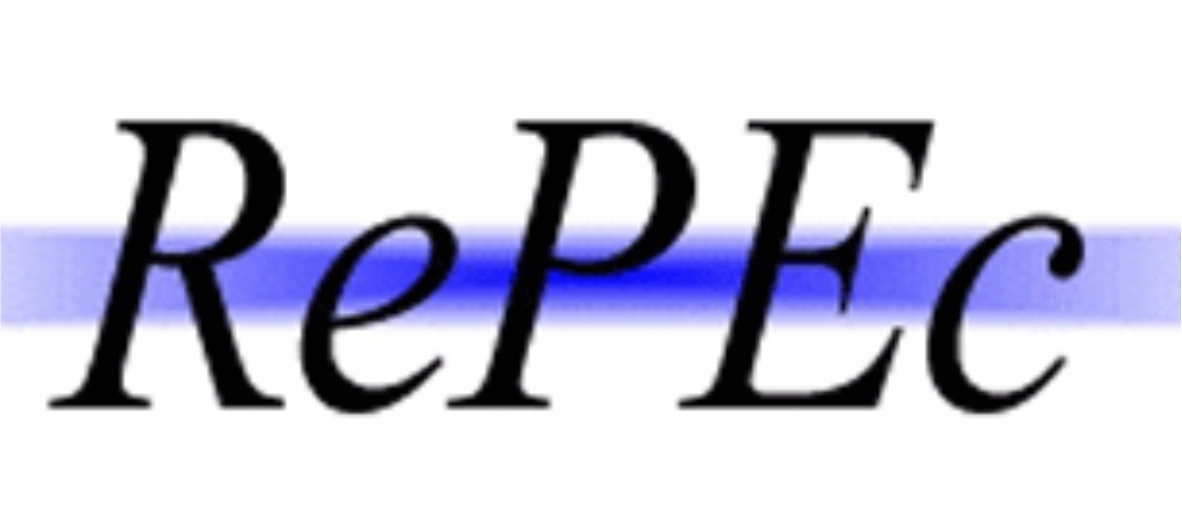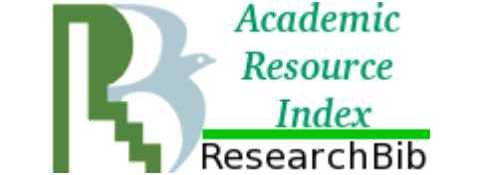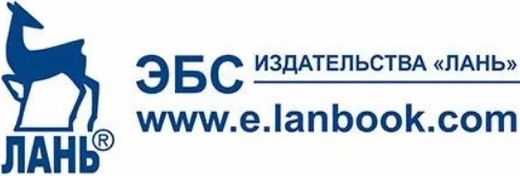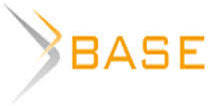DIALOGUE AND PROFESSIONALISM IN THE CONTEMPORARY ORGANIZATION
Abstract
The dynamic changes as an integral part of everyday life are highly characteristic for the workplace. On the other hand, differences in cultural norms and values affect the changes specifically and add a different dimension to the processes that form the individual professionalism and the new reality in organizations expressed through collective intelligence. One of the resources for their formation is the dialogue. According to the varieties of dialogic interaction there are three types of dialogic subject and according to the prevailing type of individuals – three types of organizations. The purpose of the current paper is to set up a conceptual framework for professionalism based on the types of organizations according to the prevailing dialogic type of associates. Within the presented purpose the following tasks are placed: 1) presentation of the professionalism’s specifics as core drivers for effective development of the contemporary organization; 2) providing a proof of the dialogue’s importance as first-rate factor for formation of innovative type of professionalism; 3) presentation of the perceptions for professionalism in the context of the type of organizations according to the predominant dialogic type of professionals.
Keywords: professionalism, dialogue, classic, self-regulating and self-developing type of organization
Introduction
The dynamic changes in life are an integral part of everyday life, but they are highly specific for the workplace as well. Because of the different cultural norms and values, they acquire specific shade and add different dimension to the emerging new reality in the modern organization in which the professionalism of the individual begins to play a key role. From a third side the difference is a result of education, family, political climate, belonging to a community and/or cultural formation and other factors making the individual professional. It directly affects the formation of different dialogical types of personality according to the ability to initiate, maintain and develop such dialogic interaction by which the change takes place - through innovative thinking, emotional intelligence, resulting in employability. Here we will only say that, in our view, the difference between ordinary conversation and dialogue consists of the resources of the dialogue through the meeting of two minds on the principle of complementarity to implement change in the thinking, emotions and behavior [see. 1 in more detail, 23-87] of the participants.
1. The purpose of this study is to present the relationship between professionalism as irrevocable characteristic of the modern individual, and the dialogue and how it affects the formation of the contemporary organization. The praxeological sense of this paper is to secure the modern manager with a resource for such management that leads the organization and its people to success.
2. Theoretical concepts and methods of the study.
The study has a theoretically priority. The application of the research assumptions was made in the training of students from International University College, Bulgaria in Management for the period of 7 years. The main research methods are theoretical analysis and synthesis, modeling and abstraction. The main methods of approbation are associated with the construction of the dialogic type of cognitive tasks in teaching subjects as Human Resource Management and Organizational Management to develop dialogic competence of the manager.
The study on the concept of professionalism reveals a significant discrepancy of different theoretical perspectives. According to a number of definitions an «authentic professional» is considered the individual who is very good at what he does or who exhibits qualities of responsibility and ethics. [5] According to other authors [4, cited in 7] the professions have occurred as a «learned occupation» which is characteristic of the representatives of the higher social classes. Since the mid-19th to mid-20th century, the concept has become more widely interpreted and covers representatives of the middle classes. Mainly known are three leading schools that define professionalism.
1. The first one is concentrated on the necessary distinguishing characteristics of a profession. Although there is no clear consensus among its representatives, according to Brint [4], most analyzes are focused on the combination of expertise, collective organization and collective control, ethical standards and work in the field of «public service».
2. The second school focuses on the so called professionalization process. According to this approach [14] the profession is not perceived as a clearly defined object, but rather as a status for which can be claimed by a number of clerical jobs. Typical for the development of this school is the definition of five stages of the process of professionalization: the hiring of a group of people for important job positions; emergence of professional associations; development of formal academic courses and training; political action to establish rules governing the professions and the entry into force of the code of ethics.
3. The third school [13] denies the existence of any practicality in the concept of occupations, as the public utility of the term is preferred to refer to certain classes.
According to Brint [4 cited in 7], there is a conceptual problem with the approach of the three schools. The author argues that the professions are creations of the labor market, resulting from efforts to achieve a dimension of autonomy of practice and represent a kind of «asylum» on the same market. The latter is a source of power and privilege for those under the so called «market protection» but a major source of acquisition of such status is a specific training provided only by institutions of higher education.
It can therefore be concluded that modern interpretations of the concept of «profession» seek to link previous picture of the characteristics with the process of professionalization. This is done by considering the role of the market to carve out a specialized type of labor activity and the key role of higher education as basic prerequisite for the acquisition of necessary specialized knowledge and skills to practice the profession, i.e. professionalism.
It should be noted that one of the main problems [8] for development of modern professionalism is the lack of effective liaison between educational training programs and actual skills demanded on the labor market. Allen adds that it is not given enough attention to the interdependence between professionals, the opinion of practitioners in the professional literature as well as to the holistic and systematic thinking [3]. Several authors [11, 10, 6] support the view that there is a gap between the academic and professional field by sharing the fact that a significant amount of research on professionalism are not based on practical realities and are often carried out without its assistance. On the other hand, the authors agree that in practice rarely an extensive research can be reached, but rather a simplified assessment of the professionalism of the individual is selected only when solving problems. However, the authors share the opinion that for professionalism is discussed, when representatives of a profession share common goals, which means that it is necessary a single dimension for the understanding of the inherent qualities of the individual for a particular job. In fact, it reveals the parameters of the characteristic for the profession feature, namely as professionalism. Namely the presented gap between theories, education and practice motivate towards the theoretical study of professionalism in the bosom of the dialogue in relation to the types of organizations in the modern context.
The dialogue is one of the attributes of the philosophy of education based on personal approach through which solves the problem of employability of the modern individual [see. 1]. Through dialogue, the concept of the personal approach is enriched by ideas about the functions of the individual and their development, the experience of dialogic interaction with the professional and the creation of meaning and work through reflection, as well as the mechanisms for the formation of personal experience. Components closely related to the construction of individual professionalism.
The contemporary empirical studies such as National Professionalism Survey, 2013, indicated that personal qualities associated with the presence or absence of professionalism, are yet not clearly understood by most stakeholders, where one can make a conclusion for certain subjectivity in defining the concept and the usefulness of research in the field [9]. The conducted research in recent years (2009-2013) changed the perceptions for the qualities that describe professionalism, and they begin to associate with:
- successful completion of the given tasks
- personal interaction
- communication skills
- appearance and
- presence at the workplace.
As can be seen, the unifying all the attributes category is the dialogic interaction. Moreover, it can be assumed that whatever dialogical interactions are established in an organization, such will be its success. On the other hand, the problems in the assessment of professionalism in the workplace are associated with insufficient focus on the work, deterioration or lack of improvement in the ethics of work and work with information technology, different notions of professionalism by the representatives of different generations.
In-depth assessment of the motives for the demonstration of professional conduct can be found in the broader analysis of the environment in which the motives of professionalism can be found in the increased competition in the labor market, increased availability and volume of information at the stage of academic training, higher focus and motivation of students for improvement. Given the results presented, it can be established that the reasons for the neglect of professional conduct in the workplace is most likely rooted in the mismatch of perceptions of the concept on the stage of training and during actual work after that.
Obviously the clash of perceptions regarding professionalism such as: individual, based on sex, national and corporate culture, etc., leads to impede the work on individual and organizational level, and generally leads to reduced organizational efficiency and hence to problems in the implementation of the company’s values on the level of the external environment. Therefore, the search for a solution to the raised problem is part of the tasks presented in this study with a view for seeking a connection between the output of common perceptions of the concept of «professionalism» and its adequate expression in the organizational dimension. As inevitably the achievement of consistent opinion for the professionalism as a category can be provided by means of a suitable dialogue between the individuals, for the achievement of an uniform understanding of the term «professionalism», below are presented some types of organizations according to the dialogic type of the associates.
The attempt to build a link between the dialogue as a tool for demonstrating professionalism leads to the types of interaction in the organization as between manager and associates and as between themselves, and on external organizational level - between different types of organizations. The research results reveal that the professional as a presence in the dialogic space wastes away or transforms from a non-participating-object in participating object-subject (executor of another’s will) to active, an expressive, and so self-creating and speaking subject [see 1, 87-96]. The important thing is to see how the attitude changes - on one hand, of the governing subject in practice to the employees - professionals and thus - theoretically - what is the idea and its dynamics in the understanding of management as a binary (two-subject rather than subject-object) activity. From this dynamic depends the use of dialogue as a tool for propulsion of thought-speech activity not in conversation for the sake of the conversation, but in view of the development and self-development.
Results from the research and discussion
The study reveals three primary types of dialogical relations and corresponding three types of professionals – classical, non-classical and post-non-classical. According to the research attitude the point of putting the types of (non) dialogic professional in the organization is rather praxiologic.
The research results show that:
• the attitude of the management to the professional as a classical object creates configuration of relationships based on the violence in the relation: manager-subordinate (priority within the organization);
• the attitude of the management to the professional as a non-classic object-subject - configuration of the relationships of non-violence: manager-assistant (priority inside and outside the organization);
• the attitude of the management to the professional as a post (neo)non- classical, i.e., active subject – creats configuration of involvement: manager (leader) -follower (priority with openness to people and organizations).
For the modern manager it must be clear that in an organization classical and non-classical and post-non-classical type associates will be detected because of the different professionalization factors mentioned above. And with each of them imperative important for the manager is to be included in the different types of dialogical interaction.
The relationships of the elements inherent in each presented further types of organizations such as: socio-economic systems are based on the dominant type in their dialogic type of professional. This reference aims to highlight how the configurations of the relations manager-subordinate, respectively manager and associates and manager- followers determine the type of organizational system. On the other hand, it helps to build a time profile of the professional – one of the manager and one of his assistant – in relation to the objective and subjective characteristics of the relationships, on which professional interaction between them in the particular type of organization is built. How the presence of different types of dialoguing subjects construct the organization?
Classic type of organization. The operation of the two main subjects of the interaction in the organization - managers and professionals - featured in the categories part and whole, essence and process, causality, opportunity, necessity, space and time. In simplified classical organizations seemingly uncontroversial version of management due to the dominant type of classic professional prevail. His qualities rather as an object-executor of tasks set by the manager determine the properties of the organization.
When the links between professionals in the organization are subject to the classical causality, for space and time is thought as of something external to the organization. The people and the organization work as a mechanical system under stimulus-response relationship (see Scheme №1).
Traditional is the emphasis on the object of activity as something primary and the interaction is seen as an effect on one subject over another. It’s obvious according to the placement of the types of professionals that in an organization where subject-object relationship between ruling people and people who are ruled are prevailing, it would work as a perfect mechanical, well-administered bureaucratic system.
1. Self-regulatory organization. There is a different configuration of personality types in the self-regulatory system – Scheme № 2. It gives priority to the representatives of non-classical type to involve, work and feel comfortable. The self-regulatory organization has a number of innovative traits. Its elements (especially human resources) differentiate as relatively autonomous sub-system. The integrity of the organization suggests the presence of a special unit of management in it, direct and reverse links between the management and other individuals. The organization works on pre-program for functioning that determines control commands and corrects the behavior based on strong feedback.
The part and whole are categories applied to the complex self-regulatory organizations adopt new features. The whole is not limited to the properties of the parts, occurs systematically quality of the whole. The part inside and outside of the whole possesses different properties. However, in the self-regulatory organizations their individual specialized subsystems out the outline of the whole are not able to function. If removed from the body they break down or die.
2. The self-regulatory systems cannot be reduced to the classical type of causality and they complement with the ideas of «probability» and «target causality». The first characterizes the be havior of the organizations considering the stochastic nature of the interaction in the subsystems, the second – the action of the program of self-regulation as a goal, securing the reproduction of the organization.
Such reproduction creates new meanings in the space-time limits of self-regulatory organizations, which requires non-classical type of professionals on one hand – to obey its regular programs, and on the other – to actively create new meanings of existence as its new social space-time.
3. Self-developing organization. Complex self-regulating systems can be regarded as stable states of self-developing organizations. The latter are characterized with development, in the course of which occurs the transition from one type self-regulation to another. They have inherent ability in the development process to produce new levels of hierarchy. Moreover, any such level has an adverse impact on earlier complex levels to rebuild them and as a result of that the system receives a new, i.e., different integrity. Along with this the unit management rebuilds therefore new parameters emerge and new types of direct and reverse links.
In such a context, it becomes evident that the dominant type of professionals in self-organizing organizations is mainly post-non-classical type. Typical for them is openness, exchange of experience, energy and information from internal and external environment. Given the nature of the interaction of the organization with the environment as experienced by previous interactions (such as its history), people enter in the programming function of new behavior of the organization in aspects of its functioning as development. The associates transform themselves as followers of the creativity process in management, not as the manager himself. They become subjects to current projection through technical and technological system in even more evolving complex - man-technical-technological system, plus ecological system, plus cultural environment accepting new technology.
The self-developing organizations are characterized by flexible, often invisible from outside transformations. There the categories for part and whole include new meanings. By formation of new levels of organization occurs a reconstruction of the previous integrity, new parameters of order develop in it.
While in the self-regulatory organizations appears a new understanding of themselves as a self-regulating process, in the self-developing concepts they are complemented with new meaning. The organization is represented in the quality of the continuous exchange of essences, energy and information with the outside environment like an invariant in variable interactions with the environment. The complication of the organization in the course of its development, associated with the occurrence of new levels of organization, constitutes as a change from one version to another, as a process of transition from one type of self-regulation to another. The organization as a sense occurs here in two ways: as a self-regulation and self-development [ibid].
Although the emphasis is on types of dialoguing professionals against the types of organizations the synergy as unwinding knowledge of the systems submits to the plan required complementarity and implies large enough heuristic potential.
Now two connected between themselves synergistic discoveries should be identified. The first is the notion of cooperative effects governing the reproduction of the integrity of the organization. Second, in contrast to the description of the dialectical development, referred to as «jump» or «transition to a new quality» is the concept of dynamic chaos. It reveals the mechanism of the establishment of new levels of organization when the random fluctuations in a state of instability lead to the formation of elements in a non-linear environment and subsequent emergence of new order parameters. So synergy brings a whole range of important specification in understanding the mechanisms of development required in the plan of this study.
Conclusion
From the so presented organizational types based on dialogic type of professionals the concept of professionalism could be explained as a perception of the rest by the subject as its complementarity, which gives it a new role in the organization. This role is not necessarily related to hierarchical position, but above all with a personal awareness of the content, limits, time and spatial dynamics of the work. The individual achievement, individuality, uniqueness, creative potential are the new dimensions of this new kind of professionalism associated with the new type of organization, where the individual is a subject rather than an object in management style based more on bilateral interaction (dialogue) instead of unilateral action and decision. The practice of collective intelligence to tackle the problems gives a reason to talk about the so called «resistance of the professionalism». It is associated with the ability of the contemporary professional to fill the communication gap between the organization in whose interest works the public understanding of organizational contribution. Otherwise, managers/professionals are likely to be increasingly irrelevant to the social reality and the organization in a contemporary aspect.

















Reference lists